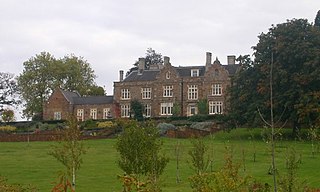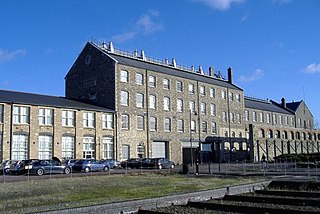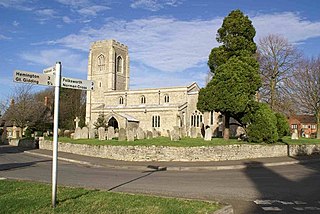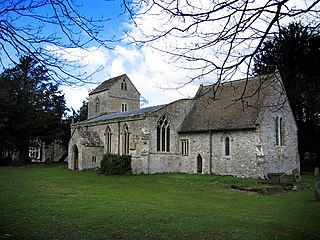Publications
The Commission determined from the outset to publish its inventories of monuments, and to compile them on a county-by-county basis. [8] The first county selected for survey was Hertfordshire: the resultant volume was published in 1910. Some 40 inventory volumes were published over the next 70 years, before the project was wound down, in favour of more thematic publications, in the early 1980s. [9] In accordance with the Commission's warrant, the inventories were initially limited to identifying constructions up to 1714, but were later extended to 1850.
Several inventories were not geographically complete at the time the project was abandoned. Cities and counties covered in part are York (abandoned after 1981), Cambridgeshire (abandoned after 1972), Northamptonshire (abandoned after 1986), Gloucestershire (abandoned after 1976) and Salisbury (abandoned after 1977). In some cases research for forthcoming volumes had started after the decision not to proceed with publication was taken, and these appeared in later HMSO publications or elsewhere. Dorset is the only county which was completed in its entirety to the revised 1850 date, with Cambridge and Stamford the only urban areas to be completed to the same date.
The published inventories are now available to view in full at British History Online. [10]
Inventories

- An Inventory of the Historical Monuments in Hertfordshire (1910)
- An Inventory of the Historical Monuments in Buckinghamshire (1912–13)
- Vol. I: North
- Vol. II: South
- An Inventory of the Historical Monuments in Essex (1916–23)
- Vol. I: North-West
- Vol. II: Central and South-West
- Vol. III: North-East
- Vol. IV: South-East and County Heraldry before 1550
- An Inventory of the Historical Monuments in London (1924–30)
- Vol. I: Westminster Abbey
- Vol. II: West London excluding Westminster Abbey
- Vol. III: Roman London
- Vol. IV: The City
- Vol. V: East London
- An Inventory of the Historical Monuments in Huntingdonshire (1926)
- An Inventory of the Historical Monuments in Herefordshire (1931–34)
- Vol. I: South-West
- Vol. II: East
- Vol. III: North-West
- An Inventory of the Historical Monuments in Westmorland (1936)
- An Inventory of the Historical Monuments in Middlesex (1937)
- An Inventory of the Historical Monuments in the City of Oxford (1939)
- An Inventory of the Historical Monuments in Dorset (1952–75)
- Vol. I: West
- Vol. II: pts 1–3: South-East
- Vol. III: pts 1–2: Central Dorset
- Vol. IV: North Dorset
- Vol. V: East Dorset
- An Inventory of the Historical Monuments in the City of Cambridge (1959; two volumes)
- An Inventory of the Historical Monuments in the City of York (1962–81; incomplete. A sixth volume, covering the Minster was planned but never issued.)
- Vol. I: Eburacum: Roman York
- Vol. II: The Defences
- Vol. III: South-West of the Ouse
- Vol. IV: Outside the City Walls East of the Ouse
- Vol. V: The Central Area
- An Inventory of the Historical Monuments in the County of Cambridge (1968–72; incomplete)
- Vol. I: West Cambridgeshire
- Vol. II: North-East Cambridgeshire
- An Inventory of Historical Monuments in the County of Northampton (1975–86; geographically complete but structures covered only in part)
- Vol. I: Archaeological Sites in North-East Northamptonshire
- Vol. II: Archaeological Sites in Central Northamptonshire
- Vol. III: Archaeological Sites in North-West Northamptonshire
- Vol. IV: South-West
- Vol. V: Archaeological Sites and Churches in Northampton (some material published only in microfiche form)
- Vol. VI: Architectural Monuments in North Northamptonshire
- Ancient and Historical Monuments in the County of Gloucester (1976; incomplete)
- Vol. I: Iron Age and Romano-British Monuments in the Gloucestershire Cotswolds
- An Inventory of the Historical Monuments in the Town of Stamford (1977)
- Ancient and Historical Monuments in the City of Salisbury (1977; incomplete in this series, although research for later volume published elsewhere)
- Vol. I: Covers the area of the former municipal borough, exclusive of the cathedral close and its walls and gates. Includes Old Sarum castle and cathedral.

















